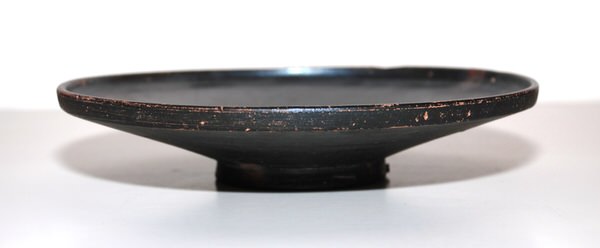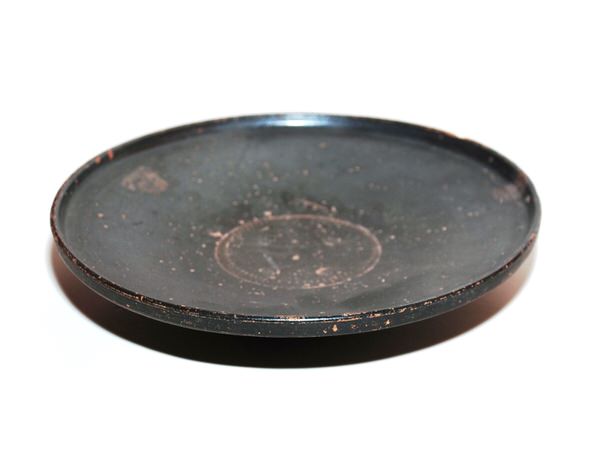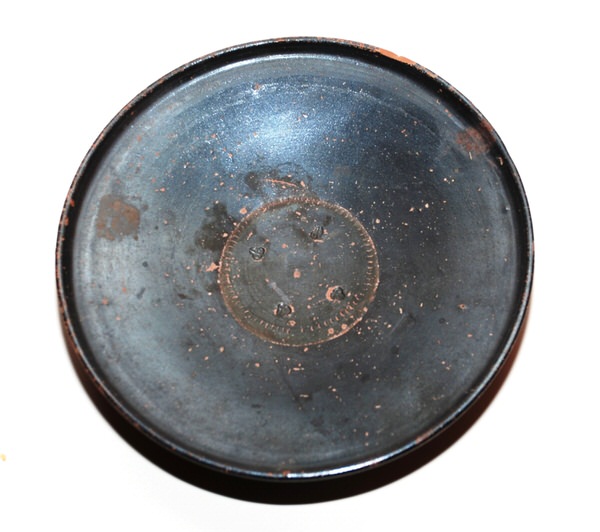Campana-made patera
In the glimpse of the 3rd century B.C., the area of Naples saw the birth of a number of ceramic workshops that produced black-painted earthenware; the products from these workshops are known as crocks in Campana A. When Rome took over Campania in the following century, these workshops enjoyed an incredible development, using slave labour in standard procedures that allowed them to produce tens of thousands of crocks at very low costs.
This crockery was then sold with the amphorae containing precious Campania wine throughout the Mediterranean area (fig. 1).

The earthenware transported via the sea was mostly open, i.e. Plates, cups, bowls so that they could be piled up more easily than closed shapes such as bottles and small urns.
The vase, most certainly from a tomb given the excellent state of conservation has a body that is straight and oblique, and that ends in a small vertical edge, and is known by the Latin name of patera, due to its shape (fig. 2-3).


Internally, the patera is stamped with four small ivy leaves arranged radially, inside a circle like a wheel (fig. 4).

The crock is attributed to Campana A due to the type of semi-gloss black paint with metallic finish used; it can be allocated in the Morel F 2252 series, dating it to around the mid 2nd century B.C., due to its decoration that tends to disappear after this date.
Bibliografia
- J. P. MOREL, Céramique campanienne: les formes, Paris-Rome 1981, p. 153.
- C. TRONCHETTI, La ceramica della Sardegna romana, Milano 1996, pp. 27-29.

 VR
VR